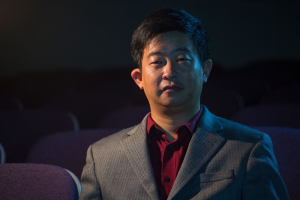Signals from smart phones are routed through base transceiver stations when they communicate, regardless of their proximity to their destinations. Signals from phones belonging to friends calling or texting in the same room must find distant base stations before they connect, just as signals from friends’ phones located in opposite corners of the city must find base stations.
Zhu Han, associate professor of electrical and computer engineering in the UH Cullen College of Engineering, earned two National Science Foundation grants to develop and employ technology that allows smart phones and other devices in close proximity to communicate directly.
The foundation awarded Han with $185,000 to optimize the performance of cellular networks through device-to-device communication and $227,500 to apply the improved technology to mobile social networking. The three-year grants enable Han to employ two doctoral students, Yanru Zhang and Yunan Gu.
Han and his team are taking the game-theoretic approach in their development of an algorithm to allocate resources for distributed optimization of cellular networks. Device-to-device communication, which base stations can monitor rather than control, is the future, Han said.
Base stations currently control channels and the amounts of power they use, among other cellular network variables. Their capacity to handle demands of existing networks is insufficient, and future generations of networks are expected to grow significantly.
Meeting cellular network demands becomes more computationally feasible with the new technology, which can also increase efficiency, lower overhead expenses and reduce phone energy consumption, Han said. Furthermore, device-to-device communication can reduce interference, which causes slow Internet downloads and dropped or poor quality cellular phone connections. Such problems are inherent in mobile networks, regardless of their generation, so the improved technology can alleviate but not cure them, he said.
Han and his students are also using device-to-device communication to mobilize social media. Networking through smart phone applications such as Facebook and Twitter becomes mobile when devices in close proximity can share location information directly. The technology then allows the devices to avoid communication from strangers and find communication from friends. The lower-level adjacency of the technology that can enable this process is not configured yet, Han said.
“Location can be a bigger part of social networking,” Han said. “We want to take advantage of that.”
